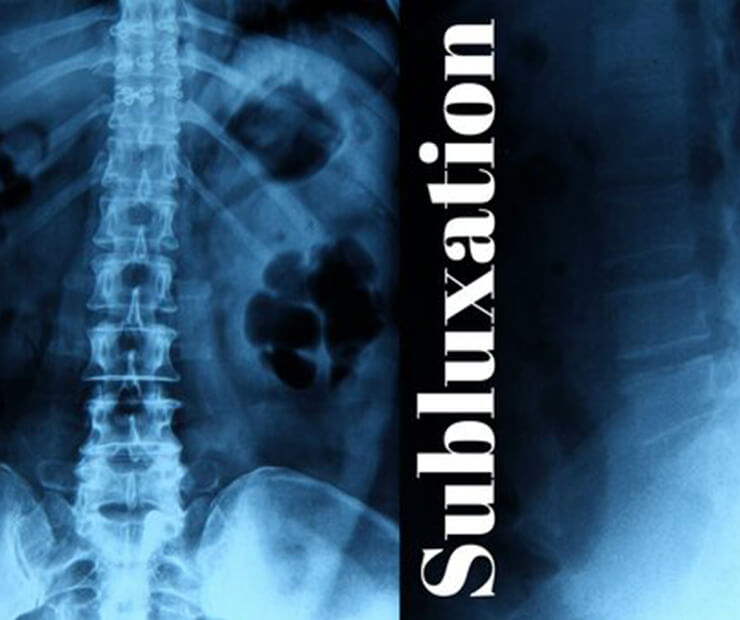A joint subluxation is a partial dislocation of a joint. It is often the result of acute injury or repetitive motion injury but can also be caused by medical conditions that undermine the integrity of ligaments. The treatment for subluxations may include resetting the joint, pain relief, rehabilitation therapy, and, in severe cases, surgery.
Symptoms
As opposed to luxation (the complete dislocation of a joint), subluxations only result in the partial separation of a joint. Some of the common symptoms include:
- Pain and swelling around the joint
- A sensation of joint instability
- Limited mobility or the loss of range of motion
- Loss of feeling or numbness (usually temporary)
- Bruising
If the joint injury is serious, call 911 or go to the nearest emergency room. Signs of an emergency include severe pain, loss of sensation, or the inability to move a joint or bear weight on it.
Types of Subluxation
Some joints are more likely to be affected by subluxations than others. Some of the more commonly affected joints include those of the spine, shoulder, kneecap, and elbow.
Vertebral Subluxation
A vertebral subluxation can occur with trauma to the spine, such as a fall or severe blow. The subluxation may involve a ligament rupture with or without injury to the vertebra (spinal bones) itself. This type of injury can compress the spinal cord, resulting in shooting pains, referred pain, or loss of nerve function.
The term subluxation is also used by chiropractors to describe any misalignment of the vertebrae that needs adjustment. Chiropractors typically use spinal manipulation to help place joints in the spine in their proper position.
Shoulder Subluxation
A shoulder subluxation means that the ball of your upper arm comes partially out of the socket in your scapula (shoulder blade). Severe injury or trauma is most often the cause of shoulder subluxation.
Sports like swimming, tennis, volleyball, and others that involve repetitive upward motions can loosen the ligaments in the shoulder and make it more likely for subluxation to occur.5
With shoulder subluxation, your shoulder may feel as it is loose or slipping in and out of the socket. Pain and loss of motion are common and often extreme.
Patellar Subluxation
The patella (kneecaps) fits in a groove at the end of the tibia (thigh bone). A patellar subluxation occurs when the kneecap moves partially out of that groove. Patellar subluxation is the most common knee problem in children and adolescents.
Patellar subluxation is usually caused by a direct fall on the knee but can also happen if the knee ligaments are loose. Symptoms can vary but may include pain, swelling, feeling the knee “give way,” and a misshapen look to the knee.
Elbow Subluxation
Elbow subluxations can occur when someone falls onto their hands. Though elbow luxations are typically very painful, subluxations may not be as obvious. The elbow may move perfectly well, although there may be a dull or sharp pain.
Children under seven can get a type of subluxation called a radial head subluxation (a.k.a. “nursemaid’s elbow”). This can happen when the child’s arm is pulled a little too roughly. Because the bones and muscles of younger children are still growing, dislocation can occur quite easily. Although painful, a nursemaid’s elbow can be easily reset by a doctor.
Diagnosis
Joint subluxation is typically diagnosed with a physical exam and imaging studies. Even if a joint injury doesn’t appear all that serious but is limiting motion or “feels loose,” it is important to make an appointment with your doctor immediately.
During the appointment, your doctor will examine the injured joint to check of any visible damage, such as swelling and bruising. The doctor will ask questions about the type of incident, if any, that preceded the injury. You may also be asked to wiggle your fingers or toes to see if there any ruptured tendons or nerve injury.
To confirm the diagnosis and direct the appropriate treatment, your doctor will order imaging tests to check if there are ruptures, hematoma (a blood pocket), joint effusion (the accumulation of fluid), or a fracture. Imaging options include:
- X-ray: A plain film radiologic study that can help characterize the dislocation and identify ruptured ligaments or bone fractures
- Computerized tomography (CT): A radiologic study involving composited X-rays that offer a three-dimensional representation of an injured joint
- Magnetic resonance imaging (MRI): An imaging study using powerful magnetic and radio waves that can help identify soft tissue injuries
Doctors will use these same diagnostic tools if you are seen in an emergency room. They will also check for serious injuries, including arterial and nerve damage.
Treatment
After examining the injury, your doctor will likely reset the joint into its proper position using manual manipulation. This may involve turning or pulling the limb.
Once the joint is properly realigned and your doctor has ruled out any complications, the treatment will be focused on reducing inflammation and pain. The standard approach, know by the acronym RICE, involves:
- Rest: You will be instructed to limit activity and avoid putting weight on the affected joint. To improve recovery and ensure stability, the doctor may immobilize the joint with a splint, brace, or cast.
- Ice Application: Icing an injury helps dilate blood vessels to reduce pain, inflammation, and swelling. Apply the ice pack for no more than 15 to 20 minutes several times a day, using a cloth barrier to prevent frostbite.
- Compression: Your doctor may suggest an elastic bandage to control swelling, reduce blood flow, and provide structural support to the affected joint.
- Elevation: Placing the joint above the heart can also alleviate pain and inflammation by reducing blood flow and pressure to the joint.
A Word From Hanson Chiropractic Center
Just because a subluxation is “not as bad” as a full dislocation, you shouldn’t ignore it and hope that it goes away on its own. Doing so may lead to permanent changes in the joint space (including the development of osteoarthritis) or result in the impairment of blood flow and the onset of tissue necrosis (tissue death) or avascular necrosis (bone death).
In most cases, joint subluxation can be treated conservatively. But, if a severe injury occurs, early treatment almost always results in better outcomes.




